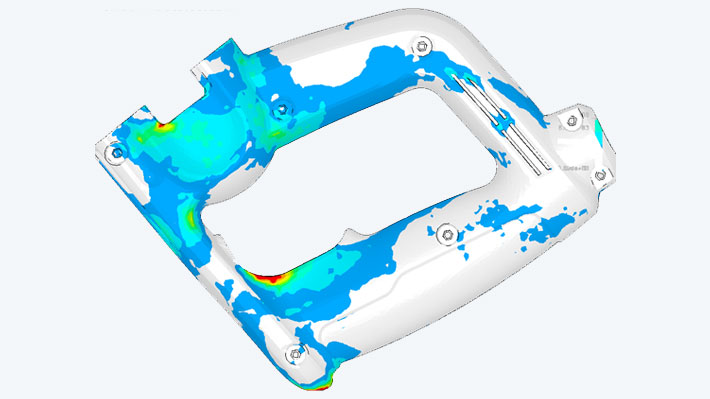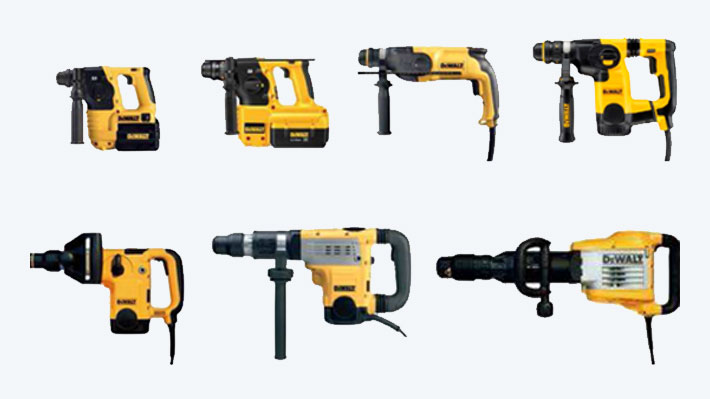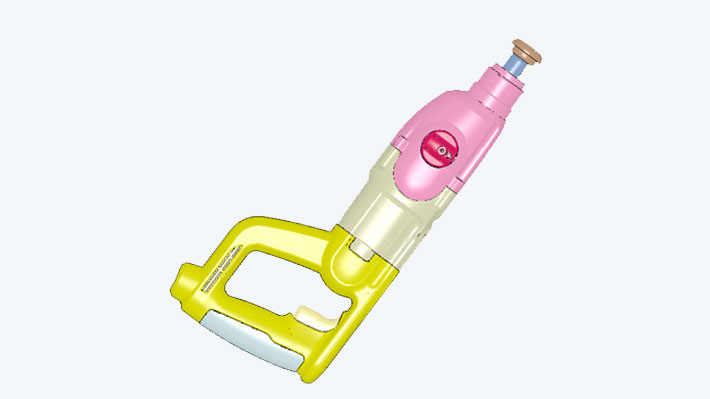
Drop test simulation for power tools using LS-DYNA
DEWALT is a quality brand owned by Black & Decker. The development of modern power tools for professional use requires not only consideration of aspects such as performance and user-friendliness, but also that special attention be given to features such as robustness and the durability of the tools when it comes to to drop tests and misuse.
Summary
Task
The challenge was to provide a suitable simulation model that would include not only the outer structure but also large portions of the internal hammer modules.
Solution
LS-DYNA ensures that the load path is realistic and that the simulation-based evaluation of the plastic components and of their weak points is substantive.
Customer benefits
Using virtual prototypes makes it possible for weak points to be predicted with a high degree of precision. This makes it possible for appropriate solutions to be incorporated early on in the development process.
Project Details
Task
The development of modern power tools for professional use requires not only consideration of aspects such as performance and user-friendliness, it also requires special attention to features such as the robustness and durability of the tools when they are subjected to drop tests and misuse. When it comes to ensuring the presence of these attributes, computer-aided simulation plays a central role throughout Black & Decker’s entire development process – stretching all the way from the pre-development phase right through to the testing of close-to-production prototypes.
Electrical tools have to be able to withstand drop tests performed from a defined height, i.e., holes that would allow contact with electrically conductive components must not emerge. As a consequence, the challenge is to provide an appropriate simulation model that includes not only the outer structure but also large parts of the internal hammer modules. Achieving this goal would ensure that the load path is realistic and that the evaluation of the plastic components and of their weak points would be substantive.
Another aspect when it comes to the design of any device relates to misuse. Hammer drills and chisel drills must be able to withstand the type of major pull-out forces and bending forces that are introduced into the handle when a jammed drill or chisel is loosened improperly.

Customer Benefit
At Black & Decker GmbH, the application of computer-aided simulation to all phases of development (i.e., concept, product development, and prototype) has, in recent years, proved its worth. Using virtual prototypes to makes it possible for weak points to be predicted with a high degree of precision. This makes it possible for appropriate solutions to be integrated early on in the development process.

Solution
LS-DYNA ensures that the load path is realistic and that the simulation-based evaluation of the plastic components and of their weak points is substantive. The amount of effort required in order to generate this model is heightened not only due to the fact that the tools contain a high number of components – it is also due to the way the external structure (necessarily) contains a high level of detail. This is particularly necessitated by the need to model the numerous slug connections and interlocking contacts of the plastic components with sufficient accuracy.

Images: © Black & Decker




